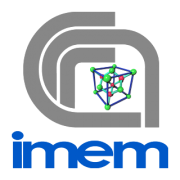Design and Fabrication of Microchamber Arrays for Drug Encapsulation and Controlled Release
Meiyu GAI
School of Engineering and Materials Science, Queem Mary University of London, UK
Controlled drug delivery and gene expression is required for a large variety of applications including cancer therapy, wound healing, cell migration, cell modification, cell-analysis, reproductive and regenerative medicine. Specially, the development of external stimuli responsive micro/nano-containers, possessing novel functionalities is attracting increasing research interest due to their ability to encapsulate and release active components, cells, particles and due to their potential applications in drug delivery.
The main focus of this work was to design and fabricated three different types of micro/nano chambers and to investigate their properties for cargo encapsulation and controlled release. A major focus was the encapsulation of small hydrophilic molecular cargo. Microchamber (MC) arrays controlled spatiotemporal cargo release via external stimuli was investigated. Along with the release mechanisms for the MC their potential applications were determined.
To get a better understanding on the topic and contents of this work, an introduction and a literature review are present first (chapter 1 and 2). These chapters are followed by the experimental section containing materials, method and instruments (chapter 3). In chapter 4, MC arrays produced out of polyelectrolyte complexes (PEC) are presented. The same chapter presents the PEC MC’s mechanical and optical properties along with the stability in aqueous media. Chapter 5 investigates polyelectrolyte multilayer (PEM) microcontact (µCP) printing, 2D PEM microplates fabrication, their application as 2D micromotors and 3D PEM MC fabrication. The presented PEM micropattern productions utilize layer by layer self-assembly combined with µCP. In chapter 6, biocompatible polylactic acid (PLA) MCs produced by one-step dip-coating are presented. In addition, PLA was used as sealing layer for PEM and PEC MCs, enabling small molecular cargo loading. Finally, in Chapter 7 external triggered MCs drug release via high intensity focused ultrasound, homogeneous ultrasound, NIR laser and thermal exposure along with potential application (controlled gene expression) are presented.

